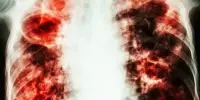Dietary nutrients play a significant role in maintaining overall health and preventing the development of chronic diseases. Researchers have conducted extensive studies to map the effects of dietary nutrients on disease and have identified various nutrients that have a significant impact on the prevention and management of chronic diseases.
Researchers developed a tool to predict the effects of various diets on cancerous and healthy cells in mice. Their findings could aid in deciphering the subtle metabolic changes associated with different types of nutrients, as well as improving our understanding of the relationship between diet and disease.
The Francis Crick Institute and King’s College London researchers developed a tool to predict the effects of different diets on cancerous and healthy cells. Their findings could aid in deciphering the subtle metabolic changes associated with different types of nutrients, as well as improving our understanding of the relationship between diet and disease.
Metabolism is the collection of processes that enable an organism to use nutrients from its surroundings in order to function. The proportions of sugars, fats, and protein in the diet determine what “fuel” is available to the cells as well as how those cells process the nutrients. Cancer cells, like all diseased cells, alter their metabolism in order to survive and grow.
Our approach can be used to help guide dietary changes that complement treatments for different diseases, but the most effective use of this understanding will be in preventing more disease by assisting us in selecting the foods we eat.
Dimitrios Anastasiou
The research team at King’s College London’s Centre for Host-Microbiome Interactions first created a comprehensive map of all metabolic pathways in the mouse as part of the study, which was published in iScience. The Crick team then gathered experimental data to put into the model by measuring the levels of gene expression in liver and liver tumors from mice that had been fed either ‘healthy’ diets or ‘unhealthy’ diets, rich in fats and sugars.
They discovered specific metabolic changes associated with poor diets, which were found to promote the production of glycerol and succinate in both cancerous and healthy tissues. They also discovered that the metabolic differences between healthy and cancerous cells were greatest in the context of an unhealthy diet, implying that tumors can better exploit unhealthy diets to promote survival and growth.
“By using experimental data from the lab, the model allows us to start understanding the complex metabolic changes that happen in tissues due to specific nutrients in the diet,” said Patricia Nunes, Senior Laboratory Research Scientist at the Crick.

According to Dimitrios Anastasiou, head of Crick’s Cancer Metabolism Laboratory: “We all know that a poor diet disrupts our bodies’ metabolism. It can lead to obesity and promote liver disease, which can lead to liver cancer. We want to know which nutrients in our diets, and in what combinations, cause these negative effects.”
The researchers then simulated the effects of changing dietary components in various combinations, from healthy to unhealthy and unhealthy to healthy. They discovered that, while some cancer-specific metabolic functions persisted on healthy diets, many of them could be reversed, but only when both fats and carbohydrates were restricted.
Frederick Clasen, first author, and Ph.D. student jointly at the Crick and King’s College London, said: “The potential applications of this work are far-reaching. We can now see which changes in the diet actually impact cell metabolism, and which have very little effect because the cells are already programmed to draw missing nutrients from their surroundings.
“To further increase the accuracy of our model’s predictions, we are now generating more sophisticated models of metabolism, that take into account how different organs exchange metabolites, and how bacteria in the gut influence what nutrients are available to tissues,” said Saeed Shoaie, head of the Translational Systems Biology group at King’s College London.
“Our approach can be used to help guide dietary changes that complement treatments for different diseases,” Anastasiou concludes, “but the most effective use of this understanding will be in preventing more disease by assisting us in selecting the foods we eat.”
Overall, the mapping of the effects of dietary nutrients on disease has provided valuable insights into the role of nutrition in disease prevention and management. By making healthy food choices and ensuring an adequate intake of essential nutrients, individuals can promote their overall health and reduce their risk of chronic disease.
















